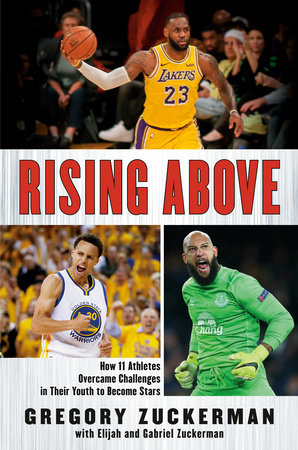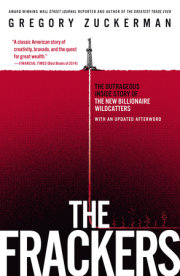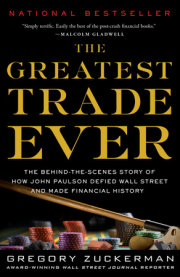Stephen CurryThere wasn’t a single college willing to give Stephen Curry a chance. His dream of playing professional basketball seemed a long shot. A really long shot.
It was 2004, and Stephen was a high school sophomore. His father had played pro basketball and been a star. Steph grew up in North Carolina, close to some of the best college programs in the country, an ideal place to showcase his talent for top NCAA programs. And Steph had passion for basketball, an accurate shot, and a hunger to make it to the NBA.
But no one took Stephen very seriously. He kept hearing how he was too tiny and skinny to play Division I basketball, the top collegiate level. The NBA seemed truly out of the question. It didn’t help that Steph had a boyish look, making him appear even younger than his seventeen years. Big-name schools kept passing on Steph, figuring he couldn’t contribute much to their basketball programs.
Those were the schools that actually knew Steph existed. Most of the best coaches hadn’t even heard of Steph; they sure weren’t going to recruit him or offer him a scholarship.
“I don’t even remember seeing him [during his college recruitment process],” says Roy Williams, the legendary University of North Carolina coach. “I do know when I did see him I thought, ‘Man, he is little.’”
Earlier in life, Steph seemed to have a lot going for him. Steph’s father, Dell Curry, had been a first-round draft pick who’d played sixteen years in the NBA for five different teams. A six-foot-four shooting guard, Dell had retired from the NBA after a long career and remains the Charlotte Bobcat’s all-time leading scorer and three-point shooter. Steph’s mother, Sonya, had been both a basketball and volleyball state champion in high school and played varsity volleyball in college.
With such a rich athletic tradition in his family, Stephen played and enjoyed a lot of different sports growing up. But basketball was his first love.
“I was a competitive guy,” Steph said in an interview on ESPN, “but something about basketball and doing what your dad did [made basketball] more of a draw.”
Having a father in the NBA was a thrill, and Steph grew up admiring his dad and his skills on the court. His mother wouldn’t let him go to Charlotte’s games on school nights, though, worried he’d be exhausted the next day and unable to concentrate on his studies. So on weekends, Steph and his younger brother, Seth, attended as many of their father’s games as they could. It was exciting seeing the best NBA players up close; it was even more fun watching their father compete against them. Steph and Seth sometimes even got to shoot with Charlotte players during pregame warm-ups.
In eighth grade, Steph decided to dedicate himself to basketball, determined to follow in his father’s footsteps. He began practicing year-round, committing himself to “do whatever it took, whatever was necessary, to play in college,” he says.
By the time Steph was a sophomore in high school, however, he ran into an imposing roadblock: He was just too small. Steph stood five foot six and weighed in at a scrawny 125 pounds.
“On every team he ever played on, he was the smallest guy,” his father says.
Steph was so frail that he had to begin his shooting motion well below his waist because he lacked the strength to raise the ball and shoot it from above his head. Steph’s father knew there was no way his son could play college ball if he didn’t change his approach. Shooting from below the waist makes it far too easy for a defender to swat the ball away. Dell knew college coaches would never recruit a player with that kind of shooting form.
One day, Dell came to Steph to deliver some unsolicited advice.
“If you want to play in college,” Dell said, “you’re going to have to bring [the ball] up and get it above your head.”
Steph was happy with his shot and wasn’t sure he needed to make such a dramatic shift. But he eventually understood he had to transform his game if he wanted to play with bigger and better players, as his father told him.
Given his size, the NBA seemed completely out of the question for Steph, but he still wanted to play college ball, so he agreed to let his father tutor him. Steph took the summer off from his usual activities, even from playing pickup basketball games, to focus on reinventing his jump shot.
He didn’t realize how difficult the process would be. All summer long, he and his father practiced and practiced on a hoop in their backyard. But Steph didn’t seem to make much progress. Some nights he ended up in tears.
“It was tough for me to watch them in the backyard, late nights and a lot of hours during the day, working on the shot,” Seth, Steph’s younger brother, told ESPN. “They broke it down to the point where he couldn’t even shoot at all. . . . He had to do rep after rep after rep to the point where he was able to master it.”
“That was a tough summer for him,” Dell agrees.
Steph worked with his father on changing his release point and moving the ball above his head in order to make his shots harder for rivals to block. Steph wasn’t very muscular, so it was hard making the transition. But eventually the lessons kicked in, and he began to master the above-the-head shot.
As they practiced, Dell and Steph developed a unique approach that made his shot both quick and accurate. When most players learn to shoot, they’re taught to release the ball as they reach the highest point of their jump. But Steph was learning to shoot on the way up, when he wasn’t very far off the ground. By shooting as he was jumping, rather than at the top of his jump like most people did, Steph could release the ball lightning-quick, in as little as 0.3 seconds. That quick-shot technique would give him an advantage over defenders the rest of his life.
Shooting on the way up rather than at the top of his jump also enabled Steph’s shot to take the form of a sharp arc, like a rainbow, making it much easier to swish through the net. Unlike everyone else, Steph’s shots came in on a high angle, as if they were on a steep, downward slope to the opening of the basket. It was a distinctive approach he has maintained, more or less the same, throughout his playing career, according to the Wall Street Journal.
Back at school for his junior year, Steph’s hard work began to pay off. That year, he averaged nearly twenty points a game. It also helped that he had a late growth spurt. By the time he graduated high school, Steph was six feet tall and weighed 160 pounds. He’d grown half a foot and gained thirty-five pounds in two years. Steph led his team to three conference titles and three play-off appearances and was named an all-state and all-conference player his senior year.
Steph seemed on the road to greatness and began envisioning himself playing for a nearby college power. “Growing up in Tar Heel country, you want to play for Duke, NC State, Carolina, Wake Forest,” Steph says.
Yet none of those famed schools had any interest in Steph. Recruiters thought he was too small and thin to excel at the collegiate level. Steph was developing a sweet stroke from the outside, but he just didn’t seem like someone who could create his own shots, deal with bigger defenders in his face, and play in college, at least at the Division I level. Some overlooked high school players excel in Amateur Athletic Union leagues, gaining the attention of colleges through that route, but Steph wasn’t an AAU star, either.
While most of the biggest schools had little interest in Steph, it made sense that his father’s alma mater, Virginia Tech, might be willing to offer him a spot on their team. Dell had been one of the school’s greatest basketball players after all. And Virginia Tech doesn’t usually go deep in NCAA tournaments, so the school often recruits high school players like Steph—capable and hardworking but with little chance of becoming NBA stars.
But even Virginia Tech, which plays in the competitive Atlantic Coast Conference, decided Steph didn’t deserve a scholarship. The only way he could play on their team, the school’s recruiters said, was if he “walked on,” or tried out and outplayed someone else to earn a place on the team. They weren’t going to guarantee a spot for Steph and wouldn’t offer him a scholarship, no matter what his father had done at the school.
“I don’t think he ever said it,” Seth says. “But you could tell it hurt him.”
Steph was disappointed, though he tried not to get discouraged, hoping a small school might give him a chance. That summer, Steph focused on refining his game and improving his shot, using the brush-offs as motivation.
The right college and coach will come, he told himself.
Steph needed someone to believe in him. He found that person in Bob McKillop, the coach of Davidson College, a tiny liberal arts school located twenty minutes north of Curry’s home. Coach McKillop knew all the famous universities had passed on Steph, but he had a feeling they were making a big mistake.
Yet like other coaches and recruiters, Coach McKillop saw the deficiencies in Steph’s game.
“He looked thin, frail, and not strong,” Coach McKillop says.
The coach knew something others didn’t, though. His son had played Little League baseball with Steph as a ten-year-old, and Coach McKillop got to know Steph, watching him on the field, game after game. He continued to follow Steph closely in high school and knew Steph had special talent.
That’s not what convinced him that Steph could be a star at Davidson, though.
“You could see the character, the poise, the work ethic, toughness, and resiliency,” he says.
Coach McKillop got in touch with Steph and tried to convince him to enroll at Davidson, offering him a full scholarship. Sure, Davidson was tiny, with fewer than two thousands students and an average class of just fifteen. The university was best known for its academics and hadn’t won an NCAA tournament game since 1969, let alone any major tournament. But at Davidson, Coach McKillop insisted, Steph could be a difference maker, a player with immediate impact. Trust me and the program, the coach told Steph. Good things will happen, he assured Steph.
Steph believed in himself and was confident he could enroll in a more famous school and make the basketball team as a walk-on. But even if he managed to make a big-time college team, Steph knew he likely wouldn’t get much playing time. Maybe a few minutes here or there in mop-up duty at the end of a blowout. Playing a minor role on a team wasn’t what Steph was hoping for, however.
Coach McKillop was the first college coach to make Steph feel he was wanted and that he could excel in big-time basketball. With that in mind, Steph signed on to go to school at Davidson.
“I could have walked on at an ACC school,” Steph says. “But I wanted the opportunity to play.”
In his very first collegiate game, Steph got the start at shooting guard, a sign of the confidence Coach McKillop had in him.
It was a huge mistake.
The game was against favored Eastern Michigan on their campus, twenty minutes outside of Ann Arbor. Curry and his Davidson teammates fell behind early and trailed by sixteen points at halftime, an early destruction. By halftime, Steph had nine turnovers. He would finish with a humiliating thirteen turnovers in total.
In the first half, Steph seemed truly out of his league in Division I basketball, just like the college coaches had predicted. In one embarrassing play, Steph handled the ball in the backcourt with defenders swarming around him and lost his footing. Slipping and falling to the court awkwardly, Steph flung the ball to a teammate, only to see an opposing player step in and knock it away. The Eastern Michigan fans cheered wildly, celebrating the ugly mistake. Davidson fans cringed.
At halftime, even Steph’s coach had second thoughts about him. “I’m rethinking whether he belongs in the starting lineup,” Coach McKillop remembers contemplating.
In spite of his reservations, Coach McKillop decided to leave Steph in for the second half, hoping he might settle down. Smart move. Almost immediately, Steph and his team began to rally. Instead of acting discouraged or scared after the awful first half, Steph called for the ball, camping out on the three-point line and begging teammates to feed him the rock. Steph began knocking down threes, one after another, becoming more confident with each bucket. He quieted the hostile crowd and led Davidson to an improbable comeback victory.
It was an early sign of Steph’s self-assurance and tenacity.
The next night, against an even more imposing University of Michigan team, Steph really went off. He scored thirty-two points, dished out four assists and even snatched nine rebounds.
Steph finished his freshman year as the leading scorer in the Southern Conference, averaging 21.5 points per game, second in the nation among freshman, just behind University of Texas forward Kevin Durant, the future NBA superstar. Steph also broke the freshman season record for three-point field goals.
One day that year, Coach McKillop spotted Steph’s parents in the airport and walked over, making a prediction: “Your son will earn a lot of money playing this game one day.”
Dell Curry was skeptical. A great college shooter is one thing. Making it at the pro level is a whole different ball game. Even though he’d had a late growth spurt, Steph was still short and slight, especially compared with guys in the NBA. Guarding big, muscular players in the pros seemed improbable. As far as Dell was concerned, Steph’s chances of succeeding in the NBA, or even getting drafted by a team, weren’t very strong; Coach McKillop’s prediction seemed foolish.
“I’m thinking, ‘Yeah, maybe [he’ll have a chance to play] overseas,’” Dell Curry says.
But Steph kept growing, reaching six foot three inches by his sophomore year in college. And he continued to perfect his shot. On March 21, 2008, Steph and Davidson played in the NCAA tournament. With his parents in the stands and a national audience glued to their television screens, Steph dropped an astounding forty points on Gonzaga University, shooting an astonishing eight for ten from the three-point range, leading Davidson to its first NCAA men’s basketball tournament win since 1969. Two days later, Steph burned heavily favored Georgetown University, the nation’s eighth-ranked team, for thirty points in another upset victory.
His parents watched from the stands, absolutely stunned. Steph was evolving from a good player into a great one before their eyes.
“Can you believe that?” Dell asked his wife.
They were so shocked they drove home from the game in silence, Steph’s mother, Sonya, recalls.
During that year’s tournament, Steph became a household name around the country, becoming only the fourth player in history to average at least thirty points in his first four NCAA tournament games and leading Davidson to the Elite Eight, where the team lost to the top-seeded and eventual champion Kansas Jayhawks.
“He changed from him being Dell’s son to Dell being Steph’s father,” Seth says.
Steph’s eye-turning performance on the national stage had transformed the way he was viewed in the basketball world and beyond. After the NCAA tournament ended, his parents saw up close how much Steph’s life and career had transformed in just a few days. At a Charlotte home game, they watched as fans mobbed Steph, as if he was a rock star.
“That’s how I knew things had changed,” Sonya says.
Copyright © 2016 by Gregory Zuckerman with Elijah and Gabriel Zuckerman. All rights reserved. No part of this excerpt may be reproduced or reprinted without permission in writing from the publisher.











